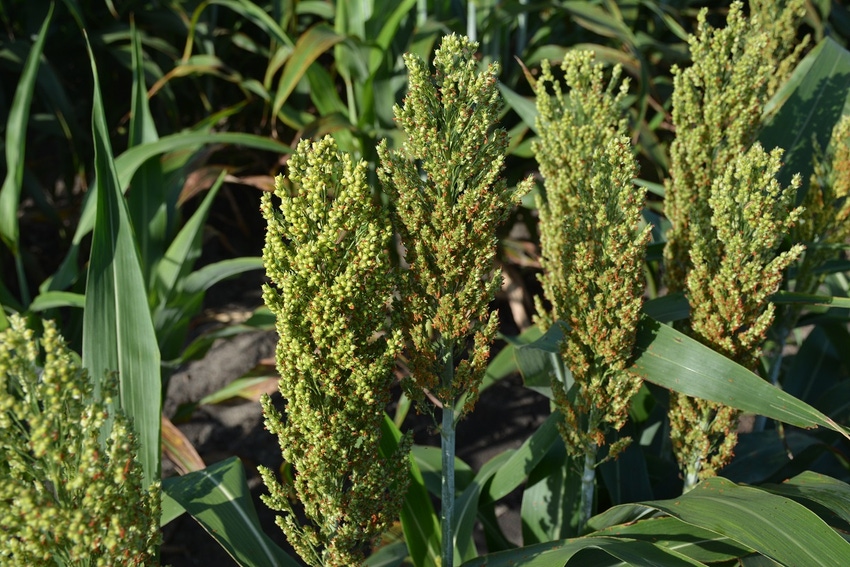February 13, 2017

The fight against sugarcane aphids in Texas grain sorghum in the 2017 crop season may be a little stronger now that the Environmental Protection Agency (EPA) announced last week approval of an emergency Section 18 provision for the limited use of sulfoxaflor or Transform this year.
The news was made available by the Texas Department of Agriculture (TDA) this week along with a list of restrictions and guidelines on use of Dow AgroSciences' insecticide Transform for the new crop year. According to TDA registration specialist Kevin Haack, restrictions and guidelines for use in 2017 mirror the same rules for use from last year, but TDA officials and Extension IPM specialists are advising producers to review the specific rules for use before applying the chemical to fields for safety reasons and to protect at-risk pollinators in Texas fields.
Sulfoxaflor belongs to a novel chemical class called sulfoximines invented by Dow AgroSciences, and offers effective control of many important sap-feeding insect pests. It can be used in potatoes, pome fruit, stone fruit, grapes, tree nuts, lettuce and wheat under a Section 3 registration. Some states have sought Section 18 emergency exemptions for the use of Transform in cotton in 2017. So far emergency exemptions have been granted for cotton in Mississippi along with grain sorghum in Texas.
Dow Chemical officials say sulfoxaflor has unique attributes compared with other sap-feeding insecticides providing a significant new tool for growers for the years ahead.
GOOD NEWS FOR TEXAS SORGHUM
The EPA notice is especially good news for Texas sorghum growers after federal action taken in the fall of 2015 put the use of the insecticide in limbo. EPA issued a cancellation order for sulfoxaflor-containing products in response to a Ninth Circuit Court of Appeals ruling “vacating” product registrations that year over concerns of the use of the chemical and its adverse effect on pollinator populations.
Dow scientists argued that four full years of widespread U.S. product use – with additional use in Canada, Australia and other nations – had demonstrated excellent sulfoxaflor performance worldwide with no noted adverse effects on pollinators.
“Federal regulators, after additional research, agreed and the product was once again registered for use on limited crops, provided specific precautions were taken during and after application. Use on grain sorghum required a special emergency exemption. The guidelines for use under the emergency exemption order for use in Texas granted this week addresses those issues.”
SPECIAL CONDITIONS
TDA recertified that the emergency condition still exists and that there were no changes to the use directions, including use rates and type of application, approved in the last authorization dated April 8, 2016. This specific exemption is subject to the conditions set forth in the EPA letter. They include:
Foliar applications may be made by ground or air at a rate of 0.75 to 1.5 ounce of product (0.023-0.047 pound of active ingredient) per acre. A maximum of 2 applications may be made per year, resulting in a seasonal maximum application rate of 3 ounces of product (0.09 pound of active ingredient.) per acre per year.
Do not apply product: 3 days pre-bloom or until after seed set.
To minimize spray drift and potential exposure of bees when foraging on plants adjacent to treated fields: Applications are prohibited above wind speeds of 10 miles per hour (mph). Applications must be made with medium to course spray nozzles.
Retreatments are prohibited within 14 days of application. A restricted entry interval (REI) of 24 hours applies to all applications. Pre-harvest interval (PHI): Do not apply within 14 days of grain or straw harvest or within 7 days of grazing, or forage, fodder, or hay harvest.
A maximum of 3,000,000 acres of sorghum fields (grain and forage) may be treated in Texas.
Environmental Hazards Statement on the label: "This product is highly toxic to bees exposed through contact during spraying and while spray droplets are still wet. This product may be toxic to bees exposed to treated foliage for up to 3 hours following application. Toxicity is reduced when spray droplets are dry. Risks to pollinators from contact with pesticide spray or residues can be minimized when applications are made before 7:00 am or after 7:00 pm local time or when the temperature is below 55 degrees Fahrenheit at the site of application."
This specific exemption expires November 30, 2017.
Applications made in accordance with the above provisions are not expected to result in combined residues of sulfoxaflor, including its metabolites and degradates, in or on sorghum commodities in excess of the following time-limited tolerances: sorghum, forage at 0.40 ppm; sorghum, grain at 0.30 ppm; and sorghum, stover at 0.90 ppm; and the established permanent tolerance for aspirated grain fractions at 20 ppm. The EPA has determined that these levels are adequate to protect the public health. Time-limited tolerances in connection with this action have been established in 40 CFR 180.668(b).
This is the fourth year that TDA has requested a specific exemption for use of sulfoxaflor on sorghum to control sugarcane aphids. On October 14, 2016, the unregistered product, TransformTM WG, was reinstated. Due to the introduction of sugarcane aphids in sorghum and the potential for this emergency to continue into the 2018 growing season, EPA has also made a preliminary determination that this use is eligible for a streamlined review next year (2018) under the recertification program.
You May Also Like




